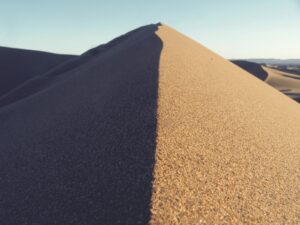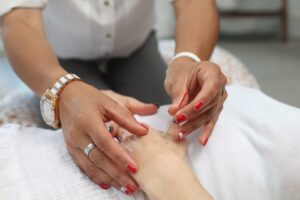Subscribe to the Newsletter
If you are interested in understanding how Traditional Chinese Medicine can improve your life sign up to my newsletter for the latest updates.

Why would you need to choose between acupuncture and homoeopathy? Well, if offered the choice, obviously. But understanding more about how they work may help you decide, too.
By the way, including Chinese medicine, below, means one includes all the many ways of treating with the underlying theory, including acupuncture, herbs, exercise, lifestyle, nutrition, moxibustion and so on, depending on the knowledge and experience of the practitioner.
Acupuncture and Chinese medicine aim to get your system working efficiently, with less pain, more energy, better sleep, better resistance to disease etc.
There’s a huge philosophical and experiential background to this, and the system provides a great deal of advice and help to assist the treatment itself, for instance via diet, exercise and so on, including what in the West we regard as within the sphere of counselling and education.
In some cases, the treatment works without the need for these ‘ancillary’ factors, and in other cases, the ancillary factors are so important that failing to observe them can undo the treatment itself.
For example, when the patient is a hot type with a hot disease condition, but continues to eat foods that are heating in their effect, so exacerbating his symptoms, this may seriously dissipate the effect of the acupuncture or herbs. The opposite is also true, so if a patient’s problems arise from Cold, requiring treatment that is warming (eg via moxibustion and herbs), then if the patient refuses to help himself by eating warm food – for instance – he may negate any benefit from the treatment.

The theory behind Chinese medicine (CM) is sophisticated and radically different from that of Western medicine (WM)
That makes WM often somewhat critical of CM, according it pseudo-scientific status!
WM is slow to absorb and use CM whereas CM adapted quickly to absorb WM.
For example, one can use CM to assess the action of WM drugs. See our page on this.
When someone is healthy, even if overweight, acupuncture etc may make little difference to weight in the short term.
Its strength is that its methods of assessing health (eg colour, odour, sound, emotion, pulse, physical touch/pressure and examination) are very practical and rely only up to a point on what the patient says.
These lead directly to diagnosis in terms of
With a diagnosis, you generally know what to do and can assess quickly whether you are doing the right thing, for example by re-taking the pulses, re-palpating where there is discomfort or pain, assessing the change in colour etc..

Homoeopathy is somewhat similar in its concept of an energy system (though Hahnemann never described it as such, ‘energy’ being a later concept) but its philosophy started from another place.
By making a patient’s metabolism respond to tiny stimulants one expects it to get healthier. This seems much easier than CM with all its theory, channels and so on.
If it works, the patient feels better and gets sick less often. Easy! However, their body may not immediately lose weight! That may come only with time, and after adopting advice which – I have found – comes easily from Chinese medicine. (But you could argue that adopting that advice confuses the issue – as to whether it was the patient’s reaction to the remedy that made the change, or from following the ancillary advice!)
The main difficulty is in deciding on the stimulus, the ‘remedy‘!
For the homoeopath, finding the first remedy is hard enough – it can take many hours of careful thought over several days, possibly culminating in interviewing the patient again for more evidence or to help decide between different possibilities.
Homoeopathy hasn’t really moved much towards physical examination. Indeed, often a patient’s dreams and visions, fears, phobias and health of forbears counts for more, providing a huge number of hints and suggestions through which the homoeopath must pick his or her way. Any physical examination is usually the kind that a Western medically trained doctor or nurse would do.
The next remedy, after the first one that worked, is often even harder to identify!
More hours of time and reflection!
Also, homoeopath needs access to countless remedies, many at different potencies (potency is another, quite big, subject), to match the remedy and dose to the needs of the patient.
(Well, not quite countless, although theoretically it could be infinite. In practice, there are several thousand remedies, any one of which in theory might apply for an individual patient. More are regularly added to the homoeopathic materia medica, giving a huge range of them for a homoeopath to work with. To do so he has to be familiar with them, which takes application and know-how!)
Of course, it’s not always this difficult. Sometimes a few facts point so directly to a particular remedy that it needs very little confirmation. Also, the result – the patient gets better, or not – follows fast.
From the patient’s point of view, homoeopathy is easier to do.

Just pop in the remedy and assess the result! Often it needs only a monthly feedback to the homoeopath.
But as mentioned, each time the homoeopath may do hours of work behind the scenes, after the patient has been in touch. Speaking from personal experience, having practised for over 40 years, I confirm that this remains true! Sometimes the years of experience make one more cautious and careful in choosing the remedy. However, sometimes that experience enables you to identify what to do much faster, so it can work both ways. |
With acupuncture, treatments are more frequent, and the acupuncturist assesses change each time, based partly on what the patient says and partly on the physical assessment.
Between acupuncture and homoeopathy, cost seems cheaper with homoeopathy because consultations come less often. On the other hand, if the remedy failed to work, or seemed to send the patient’s energy in the wrong direction, putting it right may take more months. So, although it can work faster, it can also work slower.
It’s potentially more expensive with acupuncture because, at least to start with, your acupuncturist will want to see you weekly, (or daily if you’re in China).
Later, as you improve, you might come back monthly, or quarterly or half-yearly.
I’ve had patients who turn up only every 10 years or so, by when I may have disposed of the notes I took originally! (Though I keep many notes for longer than 10 years, and for children, by law I keep them until the patient is 25.)
If the patient has poor facility in English, talking to them may make a homoeopathic consultation very difficult. Acupuncture might be better.
Having said all that, sometimes the homoeopathic remedy presents itself so forcibly on meeting the patient that the ensuing consultation is spent trying to avoid leaping to that diagnosis for fear of missing something important that points to another remedy!
Fairly often, that first insight as to the remedy turns out to have been right. But not always.

Sometimes it happens that a patient comes for treatment, quite certain in his or her mind that acupuncture is the right treatment required. Perhaps they heard about it from a friend, or they read about it somewhere. Anyway, that’s what they want. Nothing else will do.
And sometimes it happens that I identify a homoeopathic remedy that would be far more appropriate, that would – from my experience – work faster, and would require far less visits, making it cheaper for the patient in both time and money.
I have to say that dislodging firm opinions can be difficult!
Acupuncture and Homoeopathy – Once Upon a Time!A highly qualified nurse once visited me for treatment for arthritis. She’d been receiving weekly acupuncture treatment, plus various herbs and remedy mixtures, from a well-known practitioner. But he lived far away from her. This made the treatment into a day trip. That meant she had to take the day off from work: altogether it was expensive. From the acupuncture consultation, as between acupuncture and homoeopathy, I was quite sure that a single homoeopathic remedy would fit her better. I was sure it would help her for longer than regular acupuncture. She refused to believe me. For one thing she didn’t believe in homoeopathy (this is not uncommon). That was even though she’d been taking, amongst the mixtures, several poly-pharmacy homoeopathic remedies. Eventually I offered her the homoeopathic remedy and said, if there were no change in 7 days, to return for acupuncture which I’d do free and after that we’d do acupuncture weekly. Off she went …… and I heard nothing for several months. Then she made a booking for me to see her daughter, for a homoeopathic consultation! She returned for follow-up treatment – homoeopathic – for herself, about a year later. She never mentioned acupuncture again. I need to say that I don’t offer this money-back equivalent now. If a patient can’t be dislodged from an opinion I will do what the patient wants though I may repeat the option from time to time. Also, this situation doesn’t arise often. And if a patient demands that I consider all options, including acupuncture and homoeopathy, during a consultation, I make it clear that this will take longer, making it more expensive. That’s because the homoeopathic consultation can take a long time. Only after that would I do the acupuncture consultation. That would include palpating where/if it’s sore, pulses, an abdominal diagnosis, inspecting the patient’s tongue, and so on. |

Stay in Touch!
No spam, only notifications about new articles and updates.

Book a Video consultation if you want to know more about your symptoms

This Introductory Chinese medicine course introduces you to the amazing thinking behind this ancient medicine, now increasingly in demand.

The Scottish College for Chinese medicine provides introductory courses for all, explaining Chinese medicine and its cultural background.

Master Tung’s acupuncture is a hidden treasure, lost to China but recovered in Taiwan from where it spread round the world.

Knee pain has five main causes. It’s certainly worth trying acupuncture before you resort to surgery!
Subscribe to the Newsletter
If you are interested in understanding how Traditional Chinese Medicine can improve your life sign up to my newsletter for the latest updates.
Subscribe to the Newsletter
If you are interested in understanding how Traditional Chinese Medicine can improve your life sign up to my newsletter for the latest updates.